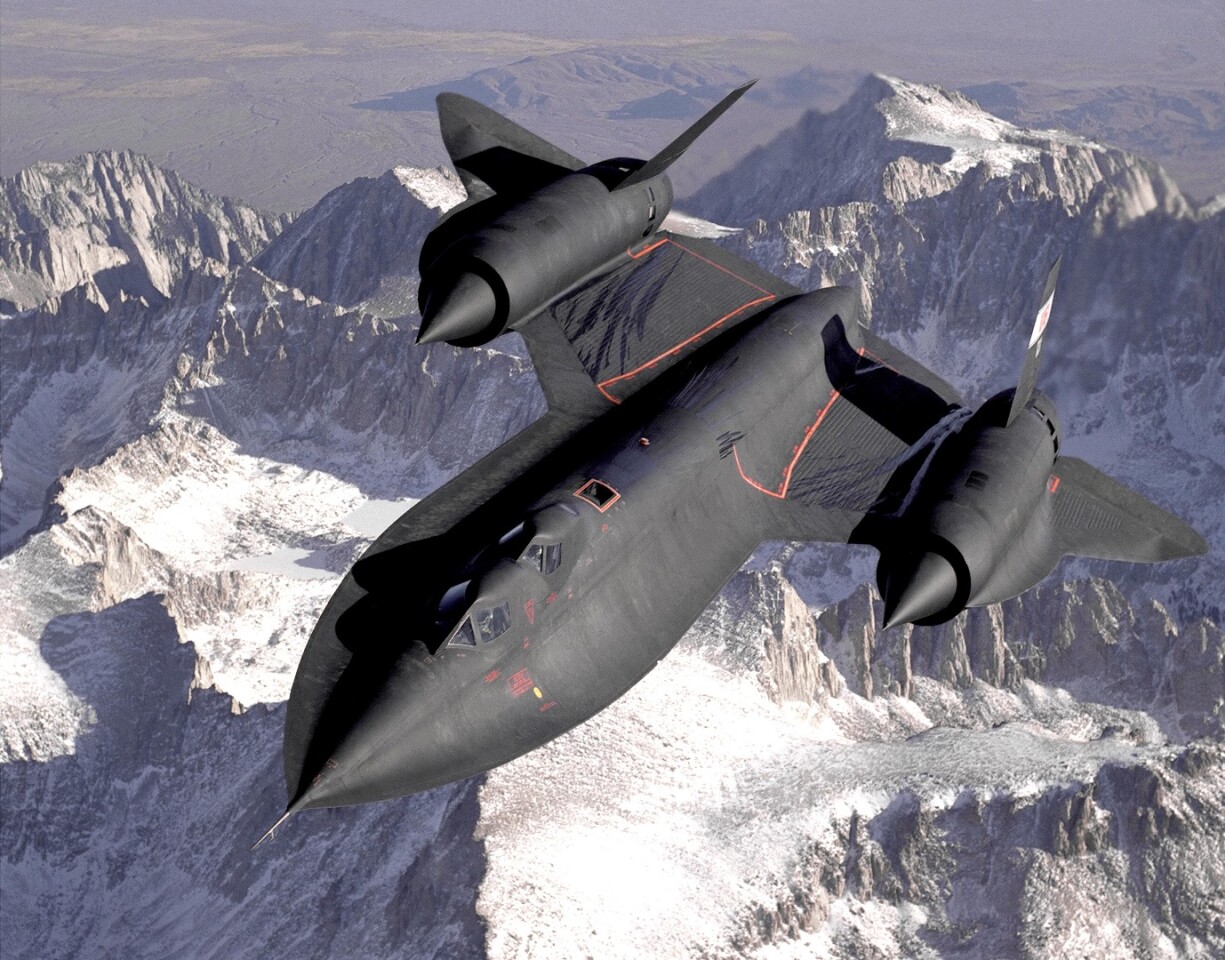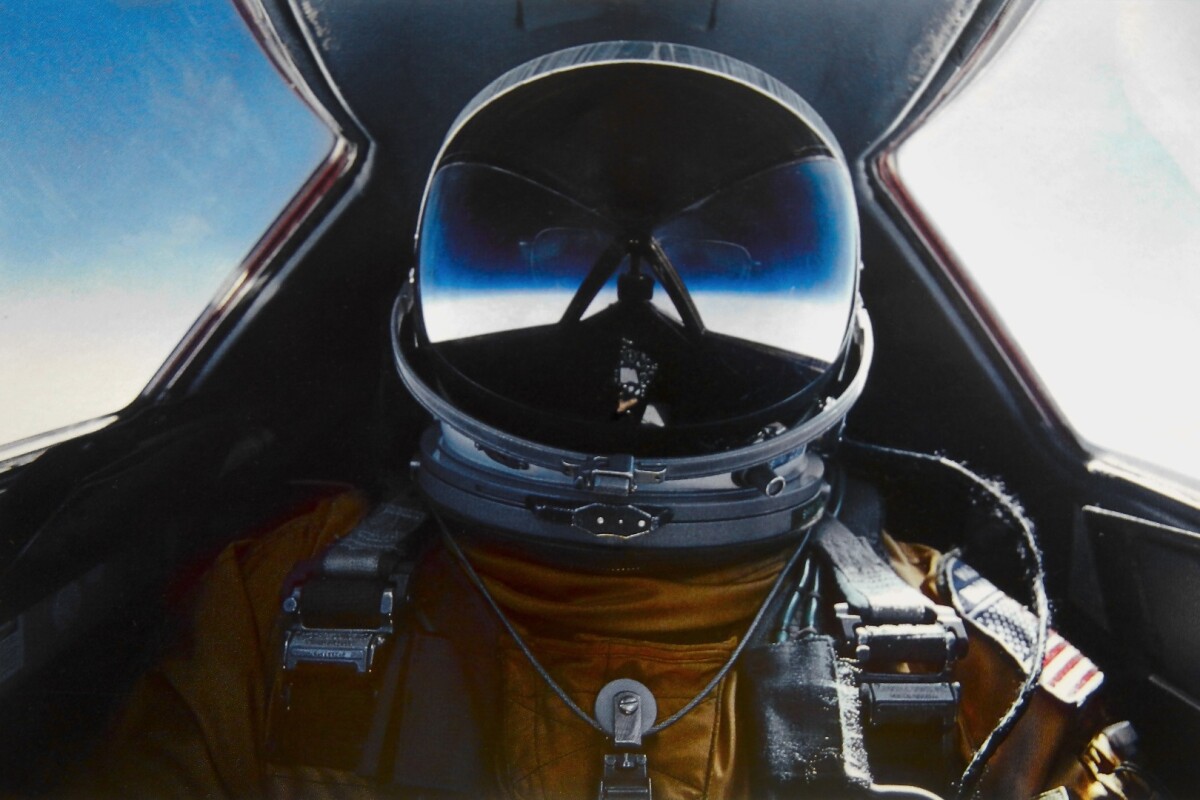Some people live truly extraordinary lives, and US Air Force pilot Brian Shul is certainly one of them. Shot down and burned half to death over Cambodia, he worked his way back to the top of the game, eventually flying the most extreme aircraft ever built.
We're closing in on 20 years since the outrageous SR-71 Blackbird made its final flight in 1999, and many of its speed and altitude records are still intact. Until the SR-72 finally flies sometime in the 2020s, the Blackbird will remain the most extreme aircraft ever flown by man, doing three and a half times the speed of sound and hitting a maximum altitude of over 85,000 ft; the pilots had to wear space suits to handle such heights.
A small, select group of men had the privilege of flying the SR-71, chiefly on surveillance missions where its ability to flat-out run away from fighter planes and surface-to-air missiles gave it a perfect record – none of the 32 built was ever shot down.

And of this small group of pilots, one stands out – not for his flying skills, but as a superb storyteller. You've probably already read Brian Shul's hilarious story about trolling a fighter pilot with ground speed tower checks, and maybe you've also heard about the slowest SR-71 flyover ever attempted. Both are terrific, go read them if you haven't.
Also a first-rate photographer, Shul spent a couple of years putting together a couple of absolutely extraordinary books on his experiences as a pilot. The most memorable of these is Sled Driver: Flying the World's Fastest Jet, about his experiences in the SR-71. The speed check story is directly lifted from its pages.
One thing the book doesn't touch on in great detail is the extraordinary journey Shul himself took to get behind the stick of the Blackbird. Overcoming massive injuries and burns from being shot down over Cambodia, Shul wasn't expected to be able to fly again at all, let alone make it into the ultra-exclusive Blackbird program.
We ran into Shul at this year's Reno Air Race, and he spoke with us about his journey, the experience of flying the world's fastest jet, and his books. We'll let Brian take it from here in his own words.

Shot down and left for dead
I was just a regular airforce pilot. I was flying special ops during the end of the Vietnam war down near Cambodia. I got shot down, I was forced to ride an airplane down into the jungle. Blew up, was given up for dead.
The helmet helped save me when I was stuck in that burning cockpit – I had a helmet and visor, but my visor started to melt. If I'd been in there a few more seconds it would've melted into me and I would've lost my eyes.
Special forces guys rescued me, medevac'd me to Okinawa – they didn't want to ship my body across the Pacific. They figured I was gonna die, so they sent me to Kadena. They flew a burns team out from Texas just to take care of me.
But I didn't die. I lasted those two months of intense emergency care, and I went from 180 lb to 119 (82 to 54 kg). So it took everything my body had to survive.
Then they shipped me back to Fort Sam, Houston, Texas, which is the main burns center. I spent a year there going through 15 surgeries. The Air Force said, wow, you're lucky to be alive.
It was very traumatic, but my training paid off. Got out of hospital, and I was able to pass a flight physical, which shocked the world. But the Chief of Aerospace Medicine gave it to me. He said "I'm really interested in your case, and if I pass you, nobody will question it, because I'm the highest authority in the Air Force."
So he gave me a two day physical, and they were real hard on me, and they came out and said, "we can't flunk you." I've got a steel pin in this finger, but the regulations just said I needed to be able to grip. So they couldn't flunk me.
So I went back, I flew the A10, A7, F5, and then I applied to fly the SR-71. By then everyone said, "OK, he's a big story, but now you've gotta pass an astronaut physical to get in a space suit to fly that thing."
I did very well, passed the physical. The guy said, "wow, you've got one of the highest scores we've ever seen." I was very strong internally, even if I looked like hell on the outside.

Flying the SR-71 Blackbird
I ended up flying the Blackbird for four years, I carried a camera – photography was my big passion – and I ended up with the world's rarest collection of Blackbird photos. The airplane still holds every speed and altitude record.
You did six months in the simulators, six months before they'd let you fly the airplane. So you're very prepared. Technically speaking, nothing is surprising you. Except, nothing can prepare you for the acceleration and everything happening at once, it's like "holy shit!"
The guy says, "ok, we're gonna climb, and I want you to level at 25,000, subsonic at about 400 knots. Start leveling at 17, you don't wanna overshoot." And I'm thinking 17?!? Are you nuts? I'll start leveling at 23 like I normally do…. well, at about 30,000 he's yelling at me… I just couldn't believe the acceleration, you're behind the jet a bit.
Those big burners, well sometimes they lit simultaneously. But otherwise there's a little jog sideways. And within seconds you're doing 210 knots (242 mph/389 km/h), pulling the nose back, and things are a blur, blue sky and gauges are just spinning, and you're at full burner, it's like … wowwwww.

It's impressive. The jet would just humble you, scare you, and thrill you simultaneously every flight. But she always had your back. We called it the lady in the long black dress. She would only dance with a few, but you better know the steps. She was a very proud airplane, a very reliable airplane, she wanted a firm hand on the stick but don't you manhandle. You need to be a real pilot. It was a living, breathing thing. You never flew it enough to get completely comfortable with the thing.
I had 2,000 hours, it became like part of you. And still, with this jet, it was like, "excuse me, I'd like another date." But when the chips were down and people were shooting at you, that jet knew, and it performed. It was just a magnificent airplane.

On his books
The books have become kind of a cult thing on the internet. No-one has ever done a book like that. I flew it, wrote it, took all the pictures. And all of the world's most top secret, least photographed jet.
To take an emotional experience with an incredible jet like that, and turn it into a readable, plausible, intelligent conveyance of that feeling… it was the hardest thing I've done. When you sit in front of a blank computer screen, you've got all this excitement about writing this book. The first paragraph I wrote, I showed it to my girlfriend,and she said "OK, you've used the word 'magnificent' seven times in the first paragraph." Haha! That's terrible!
So I started just talking, and recording myself and writing it down, then editing and re-writing. It took me a year. It reads great now, I'm not afraid to say that. But if you knew how much work it took. It's the hardest thing in the world. Makes you really admire guys like Steinbeck, Hemingway, people who can just write and make you feel like you're there.
It's a solitary vision. Just me and a couple other guys. We published it, designed it, did it right. I'd sit in the library and just write it and read it over and over and over. Pretty soon you get it shaved down to the point where I wouldn't change a thing.

On the speed check story
When I'm doing a talk, if I don't tell that speed check story, they run me out of town. I tried that one year, I thought, I've been speaking at this air museum for 10 years now, I'm gonna change it up this year. People lost their minds. I realized hey, Elvis has to sing Love Me Tender at the end of every show, I gotta tell that story no matter how many times I tell it.
And there's always people who've never heard it. I told it at an FBI conference the other day, out of 800 people I swear 700 had never heard it, and they were falling out of their chairs.
Check out Brian's extraordinary books, complete with gorgeous photos, over at Sled Driver. Thanks to Joe Salas and Mo Bessier for their assistance on this story.














